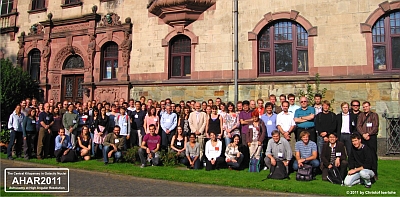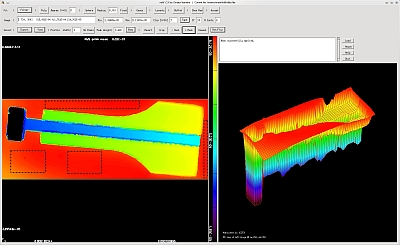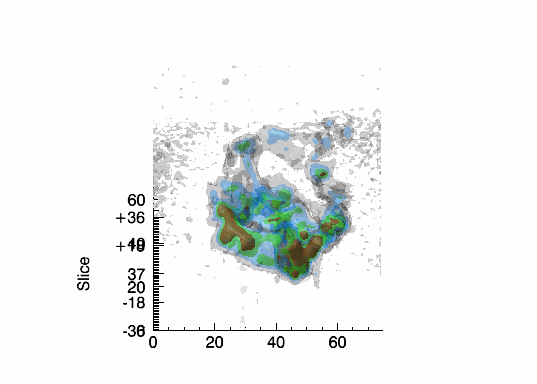Astrophysics |
 |
Publications:
Iserlohe et al. (2019) : FIFI-LS Observations of the Circumnuclear Ring- Probing the High-density Phase of the PDR. The Astrophysical Journal, Volume 885, Issue 2, article id. 169, 11 pp.
A full list of my publications can be retrieved from ADS.
Back
Workshops:
AHAR2011 Workshop
The Central Kiloparsec in Galactic Nuclei, Astronomy at High Angular Resolution 2011
Preface to the conference book (Journal of physics) can be found here.
 |
Conference photo taken outside the Physikzentrum of the DPG. |
High angular resolution techniques at infrared and centimeter to millimeter wavelengths have become of ever increasing importance for astrophysical research in the past decade. They have led to important breakthroughs, like the direct imaging of protoplanetary discs and of the first exoplanets, the measurement of stellar orbits around the black hole at the center of the Milky Way, or the detection of sub-parsec-scale jets in low luminosity AGN. With adaptive optics in a mature state, infrared/optical astronomy is pushing toward extreme adaptive optics, extremely large telescopes, and infrared/optical interferometry with large aperture telescopes. At longer wavelengths, large arrays start to conquer the sub-millimeter window, with the mid-term goal of global VLBI at sub-millimeter wavelengths. These new techniques will have enormous impact on the field because they will enable us to address issues such as directly measuring the properties of exoplanets, imaging the surfaces of stars, examining stellar dynamics in extremely dense cluster cores, disentangling the processes at the bottom of black hole accretion flows in the jet launching region, or testing general relativity in the strong gravity regime near the event horizon of supermassive black holes. This conference aims at an interdisciplinary approach by bringing together astrophysicists from the three great branches of the field, instrumentation, observation, and theory, to discuss the current state of research and the possibilities offered by the next-generation instruments.
Back
Software Development in IDL
FLUXER:
FLUXER is a processing and visualization tool not only for astronomical data cubes.A data cube is a three-dimensional matrix with two spatial axes (right ascencion and declination) and a wavelength axis. This tool was created to deal with data delivered by imaging field spectrographs like OSIRIS@Keck or SINFONI@VLT.
Capabilities:
- Works with fits files and data cubes
- Automatic and manual identification of crazy pixels in data cubes
- Interpolation of crazy pixels in 1, 2, or pseudo-3 dimensions
- Operations on data cubes, like e.g. smoothing each slice of a data cube with a gaussian PSF of median filtering each slice
- Interactive and automatic fitting to emission/absorption lines with various profiles, thus extracting of e.g. flux maps, velocity fields, ...
- Extraction of spectra from data cubes
- Data cube viewing in 2D and 3D
- Creation of animated gifs for 2D (channel maps) and 3D data
- and so on, and so on
Download: The FLUXER download page can be found here.
Back
XSFIT:
XSFit is designed to analyze and visualize surface data.
 |
A waveguide with a length of 80 microns. Data has been taken with a whitelight interferometer. |
Capabilities:
- Fit surfaces with a polynomial, a spherical, a gaussian, a lorentzian or a moffat function
- Applying fit masks
- View surfaces and fits in 2d and 3d
- Analyze surfaces with profile cuts (including analysis of the power spectrum and calculation of the Abbott-Firestone Curve)
- Surface filtering (Median, Boxcar, Peak detection, Roughness and Waviness)
- Advanced pixel interpolation: Allows you to mark a pixel or a region of pixels with one mouseclick and to interpolate them in 2d. Interpolation functions available are: mean, median, gaussian, plane, parabolic, cubic spline or chebychef.
- Creating measurement protocols
- Frontend allows preselection of data of any(!) size
Back

